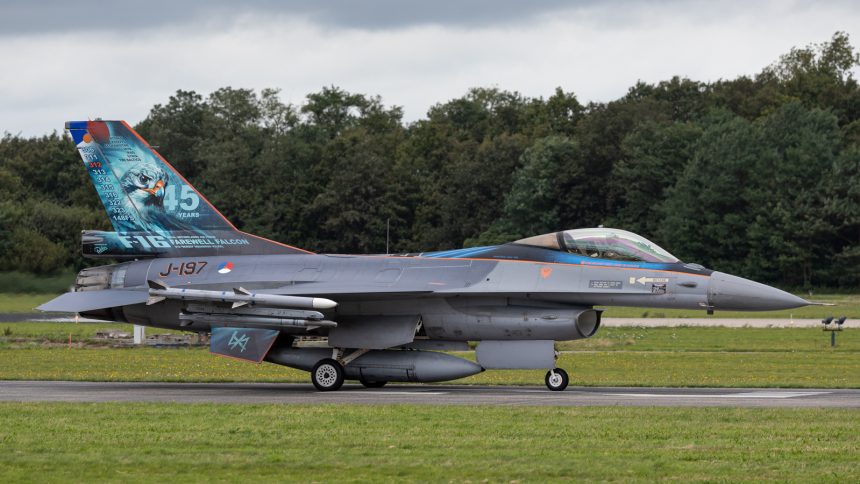Focus on the final flight of the Dutch F-16 over the Netherlands.
As already reported here, on Sept. 27, 2024, the Royal Netherlands Air Force (RNLAF) bid farewell to its iconic F-16 Fighting Falcon jet. After 45 years of distinguished service, the last Dutch F-16s took to the skies for their final formation flight, a planned journey that would showcase the aircraft’s legacy across key military sites in the Netherlands. However, the unpredictable Dutch weather had other plans, dramatically shortening the farewell route.
A Shortened Farewell
The formation of six F-16s, including the specially adorned J-197, was meant to pass over several notable locations tied to the history of the Dutch F-16 fleet. These included former F-16 bases Eindhoven, Twente, and Leeuwarden, as well as current home base Volkel. Additionally, the formation was to overfly the Dutch Logistical Center Woensdrecht, the Ministry of Defense in The Hague, the former Soesterberg air base, and the Air Force headquarters in Breda.
Unfortunately, due to adverse weather conditions, the flight was significantly shortened. Only the middle and eastern regions of the Netherlands had the chance to witness this historic flight. Despite the altered route, the flight remains a poignant tribute to the aircraft that had served the nation for decades.
Our friend and contributor Stephan de Bruijn was at Volkel AB to witness the historic final flight and take the photographs you can find in this article.
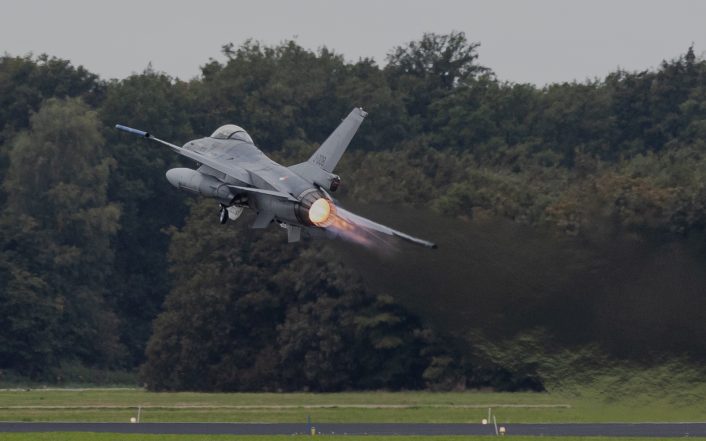
A Meticulously Planned Flight
Early in the afternoon, a total of eight aircraft took off for the farewell. Four aircraft—J-197, J-062, J-013, and J-008—formed BONZO flight, the nickname of the 312 Sqn, the last operational Dutch F-16 unit. This was immediately followed by EPIC flight, consisting of J-515 and J-006. Two additional F-16s, J-641 and J-512, took to the skies as EPIC 3 and 4.
The highlight of the day came when the formation perfectly timed its overflight at 3:12 PM over the 312 Squadron building, where a ceremony was held. As a fitting finale, EPIC 3 and 4 performed a low-level, high-speed pass from the opposite direction, adding a dramatic flair to the occasion. After landing, all aircraft were honored with a traditional water salute from firetrucks, a final tribute to these legendary fighters.
In addition to the eight aircraft, a ninth F-16, a Belgian Air Force jet with serial FB-15, accompanied the formation flight with a Dutch Air Force photographer in the backseat. This aircraft captured the shortened flight over the Netherlands, preserving this historic moment for posterity.
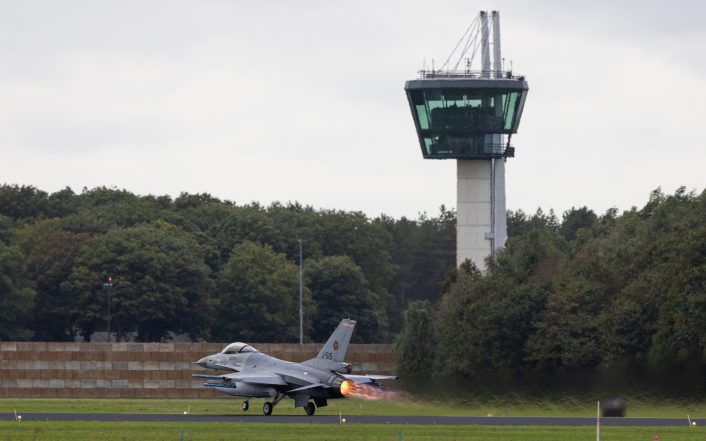
The Farewell Falcon: J-197
The star of the day was undoubtedly J-197, nicknamed the “Royal Netherlands Air Force F-16 Farewell Falcon.” The aircraft’s striking design commemorates the Dutch F-16’s operational history, with the tail displaying the numerous combat missions the fleet participated in: Bosnia, Kosovo, Afghanistan, Libya, Iraq, Syria, and the Baltics. The rudder proudly features the names of all operational squadrons that flew the F-16, with 312 Squadron highlighted in orange, symbolizing its status as the last active unit.
A small but notable detail is the Fokker logo on the tail cone, paying homage to the Dutch company that license-built the F-16s for the RNLAF.
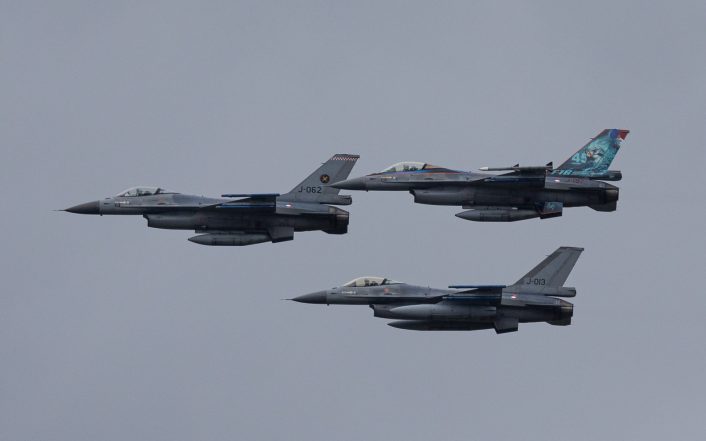
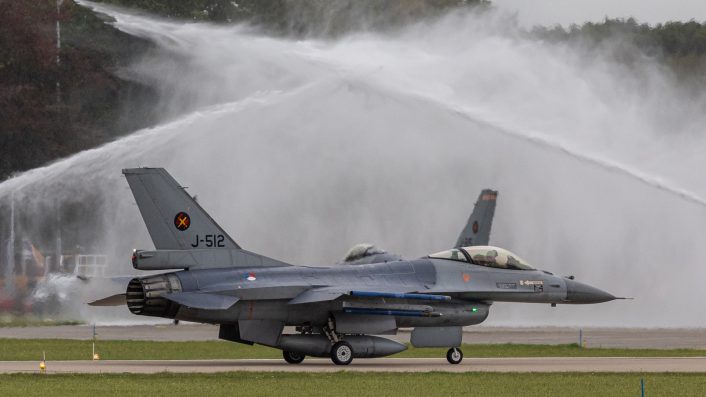
The Early Days of the Dutch Vipers
The F-16 revolutionized the RNLAF’s air capabilities when it entered service in the late 1970s, replacing aging jets like the F-104 Starfighter and the NF-5. The Dutch government’s decision to select the F-16 over competitors such as the SAAB Viggen and the Dassault Mirage proved pivotal, with the involvement of the Fokker aircraft company in manufacturing the jets locally.
This collaboration allowed Fokker to establish a production line at Schiphol Airport, where 213 F-16s were built for the RNLAF. The F-16’s debut in 1979 at Leeuwarden Air Base marked a new era for Dutch military aviation. Over the next four decades, the aircraft would play a crucial role in both NATO operations and the defense of Dutch interests worldwide.
Operational Achievements
Throughout its service, the F-16 demonstrated its versatility and combat effectiveness in a variety of NATO missions. From enforcing no-fly zones over Bosnia in the 1990s to participating in Operation Allied Force during the Kosovo War, Dutch F-16s were integral to maintaining regional stability and preventing further atrocities. In Afghanistan, the jets provided vital close air support and reconnaissance for NATO troops, showcasing their adaptability in counter-insurgency operations.
The F-16 also played a crucial role in the fight against ISIS in Iraq and Syria. As part of Operation Inherent Resolve, the Dutch jets conducted precision strikes against key ISIS positions, supporting the broader coalition’s efforts to dismantle the terrorist organization.
A New Chapter with the F-35
With the retirement of the F-16, the RNLAF has fully transitioned to the F-35 Lightning II. The last Quick Reaction Alert (QRA) mission by an F-16 took place in March 2024, and by June, the F-35 had taken over the nuclear deterrence role. On Sept. 26, 2024, the RNLAF declared full operational capability of the F-35, marking the end of the F-16 era.
As the second European air force to exclusively operate 5th generation fighters, the RNLAF is entering a new chapter. However, the legacy of the F-16, symbolized by the emotional farewell flight, will endure as a defining period in the history of Dutch military aviation.
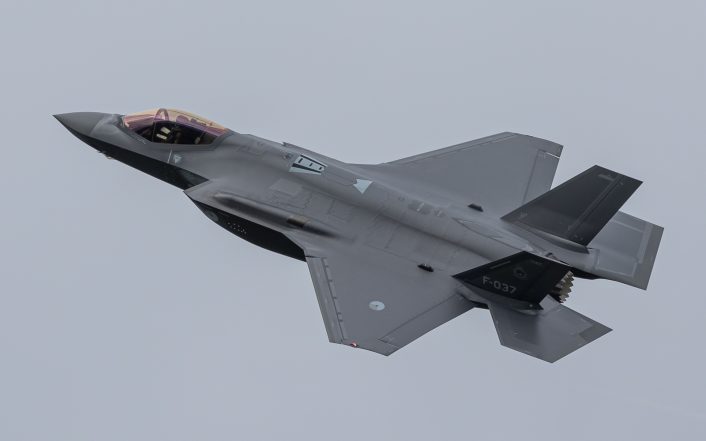
A big thank you to Stephan de Bruijn for sharing the fantastic photographs featured in this story. Be sure to follow him on Instagram here.

